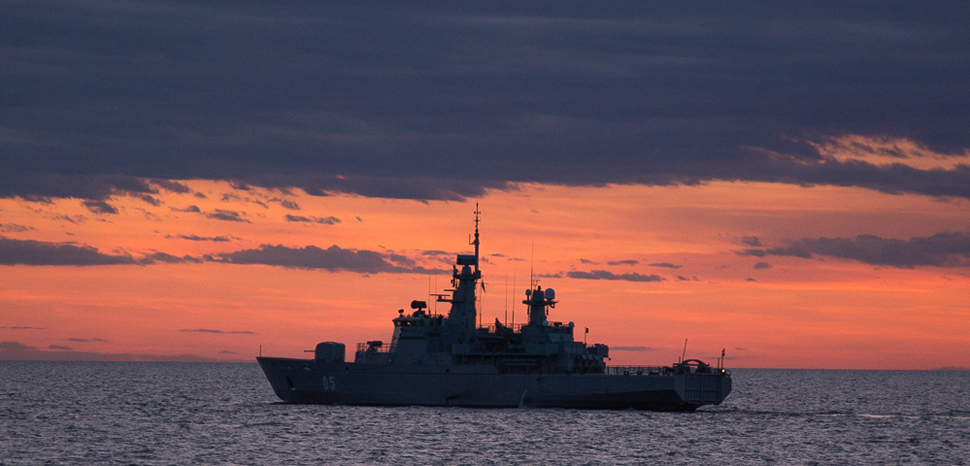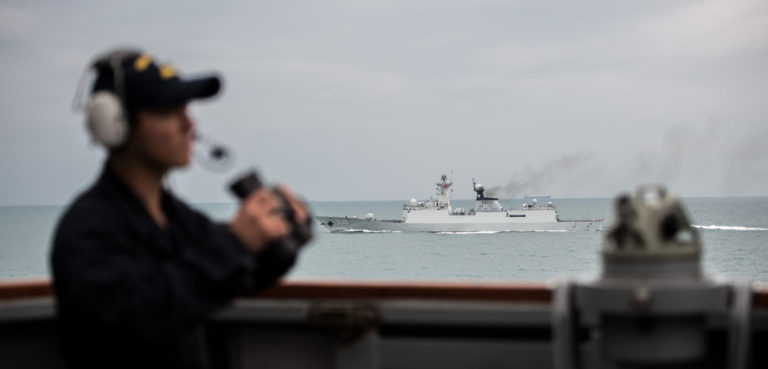Summary
Since its creation in 1949, the main task of the North Atlantic Treaty Organization (NATO) has been to ensure the security of its members by deterring – and if necessary defeating – an attack against them. During the Cold War, the principal threat to the Alliance’s security came from the Soviet Union and its satellites. All this changed following the collapse of the Eastern Bloc and the USSR itself in 1989-1991. The Organization had to adapt to the new challenges emerging from the new geopolitical landscape, such as the rise of China. In spite of the considerable distance from the North Atlantic area, its emergence as a near-peer competitor to the United States and its world-spanning influence have deep implications for the Alliance.
Background
NATO and its members are well aware of the relevance of China’s ascent to the status of major economic and military power – and they have acknowledged it explicitly. In December 2019, at the end of the London meeting to celebrate the Organization’s 70th anniversary, the leaders of its member states issued a joint declaration stating that “We recognize that China’s growing influence and international policies present both opportunities and challenges that we need to address together as an Alliance.” The declaration was echoed by the Alliance’s Secretary General Jens Stoltenberg in a February 2020 interview: “For the first time, we addressed the rise of China – both the challenges and opportunities it poses and the implications for our security.”
This concern is reflected in the 2019 edition of the Annual Presidential Report released by NATO’s Parliamentary Assembly (an entity independent from but strictly correlated to the Organization). The document outlines the multiple challenges that the Alliance faces today. China’s rise is the third issue to be discussed, right after Russia and the MENA region and before adaptation & modernization, the maritime dimension, cybersecurity, enlargement prospects, and other matters. More specifically, it quotes the London Declaration and notes how the Assembly’s delegation which visited China in 2019 met “limited interest” on the part of Chinese officials in regards to inter-parliamentary cooperation to “mitigate the challenges of the complex global security environment.” On the contrary, it notes how “the visit highlighted significant gaps in perception between China and the West on a number of issues.”
It is therefore evident that NATO is taking the implications of China’s rise quite seriously. In fact, there are multiple factors that suggest this is a relevant geopolitical shift for the Alliance.
Impact
At the grand strategy level, to ensure deterrence and protect its members, NATO largely depends on the military might – and the nuclear umbrella – of the United States. But Washington is engaged in multiple regions, including the Asia-Pacific, where China’s military build-up (notably in the naval domain) is transforming the longstanding balance of power. Its deployment of new platforms and its increasing assertiveness have raised serious concerns among its neighbors and in Washington. Considering the number of potential flashpoints where China and the US are involved (the Korean Peninsula, the Japanese Senkaku/Diaoyu islands, Taiwan, the South China Sea, the Malacca Strait) NATO’s European members fear that America might reduce or even abandon its commitments in Europe to focus on the Chinese challenge. This comes amid a feud – which has become particularly vivid under President Trump – over the low levels of defense spending by European countries, which have been accused of ‘free riding’ on the US for their security. In addition, on the basis of Article 6 of the NATO Treaty, a hypothetic (and unlikely) Chinese attack on American soil would enable the US to trigger the collective security mechanism of Article 5 and call its European allies in support. In such an eventuality, they would face a dilemma: even though the treaty does not oblige them to go to war, but rather to “assist the Party or Parties so attacked by taking forthwith […] action as it deems necessary, including the use of armed force,” they would be virtually obliged to intervene to preserve the Alliance’s credibility and America’s commitment to European security; but this would entail alienating and possibly fighting China as well as harming their own economic interests.
In fact, East Asian countries – including the PRC – are important economic partners for Europe; and independently from the remote scenario described above, a great power war in the Asia-Pacific would have serious negative consequences in economic terms. The same is true for the United States, as (in spite of the rivalry) it has deep economic relations with China, which have only partially been reduced by Trump’s tariffs. Yet there are also other aspects to consider. The PRC still holds a quasi-monopoly over the production of rare earths, a group of metals that are essential in the production of many technological devices including top-tier military hardware, which is of great concern in Europe and America alike. Another matter of apprehension is China’s ongoing project to build a chain of logistical infrastructure connecting the Asia-Pacific and Europe, known as the Belt and Road Initiative (BRI). This controversial enterprise has been met with a mix of enthusiasm and suspicion, with some regarding it as an opportunity to boost trade and others viewing it as a form of economic penetration in Europe that may result in Chinese control of strategic assets and thus greater political leverage. On a related note, the possible involvement of Chinese companies in building 5G communication networks in Europe has raised much concern in terms of privacy and data protection.
This leads into another kind of threat: cybersecurity. As opposed to economic-related issues that are more the concern of individual members than NATO as a whole, it is much more direct and relevant problem for the Alliance. The reason is that flaws in the networks used by the Organization, the governments/militaries of its members, or even private firms in the defense sector may be exploited by Chinese hackers to access classified information – ranging from political discussion in closed-door meetings to strategic plans and technical details on high-tech military systems. This is the most immediate menace emanating from the PRC, since cyberspace nullifies geographical distance and Chinese state-sponsored hackers have already been suspected of carrying out cyber espionage and attacks on multiple occasions.
Then, there is a longer-term concern that may be considered: the security side effects of climate change, namely the melting of the Arctic’s ice cap and the opening of the Northern Sea Route (NSR). The presence of precious natural resources (notably hydrocarbons) and the prospect of developing a new and much shorter waterway to Europe have attracted China’s attention to the Arctic. The development of the NSR is still in its early stages and the course remains much less used than traditional sea lanes, but its importance is expected to grow. And even if it does not become as busy in terms of trading traffic, it would still constitute a passage to the Atlantic for Chinese warships across a region where NATO has little power, since most of the NSR runs along the Russian coast. The greatest threat is represented by Chinese nuclear submarines – especially SSBNs carrying nuclear-armed ballistic missiles. According to the 2019 annual report to Congress on China’s military capabilities by the US Department of Defense, the backbone of the PRC’s sea-based nuclear deterrent are four units of the Type 094 class (NATO codename ‘Jin’), with two more being outfitted. Each capable of carrying 12 CSS-N-14 (JL-2) ballistic missiles with a range exceeding 8,000 km and armed with 1 to 8 nuclear warheads depending on yield, these submarines are considered China’s “first viable sea-based nuclear deterrent.” A new and more capable class, the Type 096 / Tang, is expected to be introduced in the 2020s. The prospect that they may conduct deterrence patrols in the Atlantic is a matter of concern for the Alliance which is reflected in the aforementioned NATO Parliamentary Assembly annual report. Citing a dedicated paper on anti-submarine warfare authored by Assembly member Leona Alleslev, it mentions that “NATO member states must take heed of the Chinese submarine challenge” and that “China also appears to be readying its submarine force for future Arctic operations.”
As a result, certain areas are (re)gaining greater geopolitical significance. The first is the Bering Strait, since it represents the gateway to the Arctic for Chinese naval units. Moreover, an armed contingency in Alaska would entitle the US to evoke Article 5, with all the consequences described above. The second is Greenland, due to its position, its rare earth mines (which have attracted Chinese investments) and the presence of the US Air Force base at Thule. Unsurprisingly, the island recently drew the attention of American policymakers – from Trump’s bizarre proposal of buying it from Denmark to the economic assistance extended to face the COVID-19 crisis. More in general, the whole North Atlantic area, and in particular the sea between Greenland, Iceland, and the UK (the ‘GIUK Gap’) is poised to retake its former importance, which had been on the wane since the end of the Cold War.
Forecast
The 2019 London Declaration acknowledged for the first time NATO’s concern over the rise of China. In spite of its distance from the Alliance’s traditional area of interest (Europe), a combination of geopolitical, military, economic, and cybersecurity factors makes the PRC a potential security threat. If its power continues to grow – as is reasonable to assume – then NATO’s attention on China will also intensify. In the economic and cyber domains it is already a current problem, albeit one that is difficult to find a common response for due to political reasons (diverging views on Chinese investments in the first case, reluctance to share information in the second). When Chinese submarines and other warships start using the Arctic to reach the Atlantic, a new challenge will emerge. This will turn the North Atlantic into the primary area of maritime interest for the Alliance, also due to the operations of Russian naval units. Member states with interests in the Arctic like the US, Canada, Norway and Denmark (and to a lesser degree the UK) will be at the forefront of NATO’s strategy and initiatives in the area, with more anti-submarine exercises to be expected. US policymakers will push allies to bolster security in the North while the US Navy keeps China at bay in the Pacific and elsewhere. Yet this trend also brings up problems of strategic prioritization as many members are more concerned about Russia or the Middle East. What is sure is that China will become an increasingly important matter of concern, one that raises the prospect of NATO getting involved in a new conflict outside its primary region of operation.




